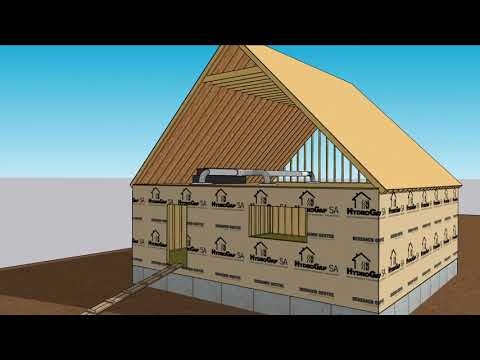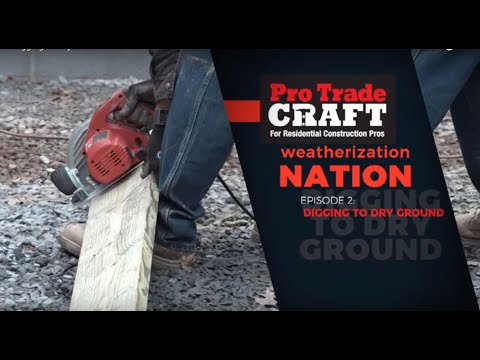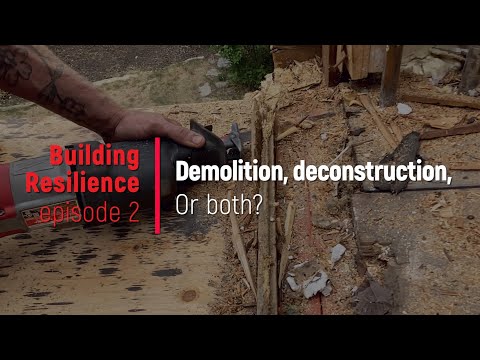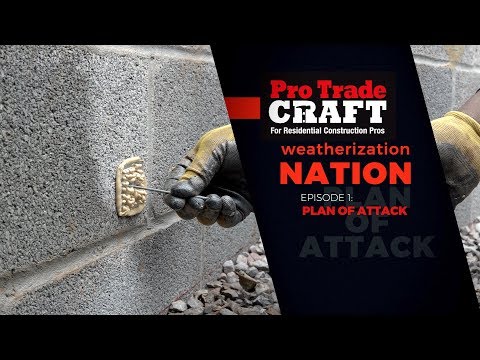Lessons learned in retaining wall construction: drainage, drainage, drainage
How to build a really big retaining wall.
OFFICIAL RETAINING WALL VIDEO TRANSCRIPT:
This is actually my house. I built this house as part of a 22-house subdivision 30 years ago, and a laborer and I built this timber wall, just the two of us.
I Think there were about 1,100 ties in this thing, so it was, about 7,000 12-inch spikes we pounded in with sledgehammers.
That was 30 years ago, I've learned a lot about how to build a retaining wall since then. One of the things I did not do with this retaining wall was provide for drainage. So I just put dirt behind the wall. Water soaks into dirt, and eventually the water's going to make that retaining wall fail.
You can see how the water was just making everything bulge.
About 15 years ago, I had an engineer look at where that one kind of soft corner was starting to come apart, and he had me bolt steel bands across it, and it lasted 15 years.
When it became obvious I had to replace this retaining wall, I looked at lots of different options
These Diamond Pro retaining wall blocks and the geogrid fabric seemed to make the most sense. It's a concrete block that's made to look like a rough stone. They're 8 inches tall, and about 20 inches long.
I think they're about a foot front to back, and they've got a lip on the backside. Each weighs about 90 pounds. Because this wall is so tall, it's 16 feet tall, this all had to be engineered with a Geotech fabric. It's 12.5 feet wide.
Out with the old, digging in the new retaining wall
We used a machine to cut out part of the lower part of the retaining wall and then used that as a path to drive down around.
One, we had to clear the area and be able to get set up so that we could dig the foundation for this retaining wall.
You bury the first one and a half of these blocks. After the first course, you put down a drainage pipe with a sock filter cloth, so once they get up a couple of courses, they put down this Geotech fabric over the top of the course of the block so then that block locks the Geotech fabric and then we back-filled it with crushed concrete.
We ended up bringing in a giant excavator and just taking the wall down because they were concerned that with the vibrating compactor—that machine that's sitting idle right now—they were afraid that was going to bring the whole wall down.
So all of this fill that they're putting in was actually recycled concrete, crushed concrete.
The issue was one having a good compactible soil that they could actually measure it was fully compacted.
Tell the customer to go on vacation while you're doing this
As far as disrupting the household, this was a large project. I was bringing dump trucks down our driveway, dumping three or four loads of crushed concrete on our driveway every day, and then using a Bobcat to carry it around back.
Bringing in three tractor-trailer loads of retaining wall block, plus just all the dirt and mud and everything. It's a dirty job. It's not something many homeowners are going to like to have to go on in their house.
So the best thing I can tell anybody is to go on vacation while this is being built.
My timber wall was built 29 years ago. I'll be long gone before this wall comes apart.
Learn more about retaining walls:
- The Inside Dope on Retaining Walls: How They Work
- How Groundwater Moves
- A Concrete Solution for a Dark Basement Apartment
—Mark Scott owns MARK IV Builders in Cabin John, MD











